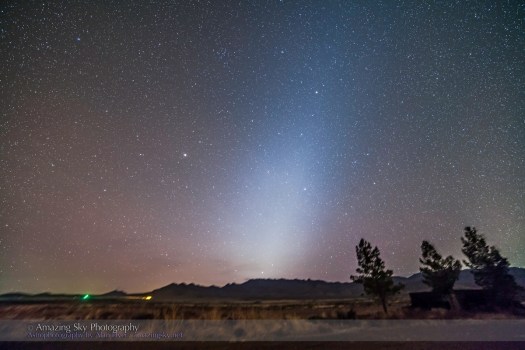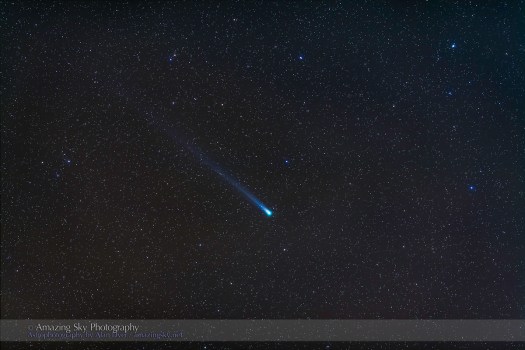The Zodiacal Light shines bright in the New Mexico dawn, near where the ill-fated Comet ISON would have been.
This was the dawn sky on the morning of December 6, 2013 looking east from our observing site at the Painted Pony Resort in New Mexico.
The zodiacal light was bright pre-dawn extending up from the horizon to high overhead. This glow is from sunlight reflected off comet dust in the inner solar system.
Adding to that cloud of dust is presumably the remains of Comet ISON (C/2012 S1) – this image includes the position where ISON would have appeared had it survived, with its head left of centre, just left of the zodiacal light, and just above the mountain ridge. Its tail would have arched up and to the left, had it grown an extensive dust tail as was hoped.
As it is, there is a comet in the field – Comet Lovejoy (C/2013 R1) is a tiny blue blip at far left, a minor consolation prize for missing ISON. Pity ISON didn’t work out, as we would have had two photogenic and naked eye comets in the dawn sky together.
The field also contains two planets: Mars in Leo above and right of centre, and Saturn in Libra just coming up over the mountains in the middle of the zodiacal light. Both lie in the zodiacal light because the light follows the ecliptic – i.e. the plane of the solar system and the orbits of the planets.
– Alan, December 6, 2013 / © 2013 Alan Dyer



